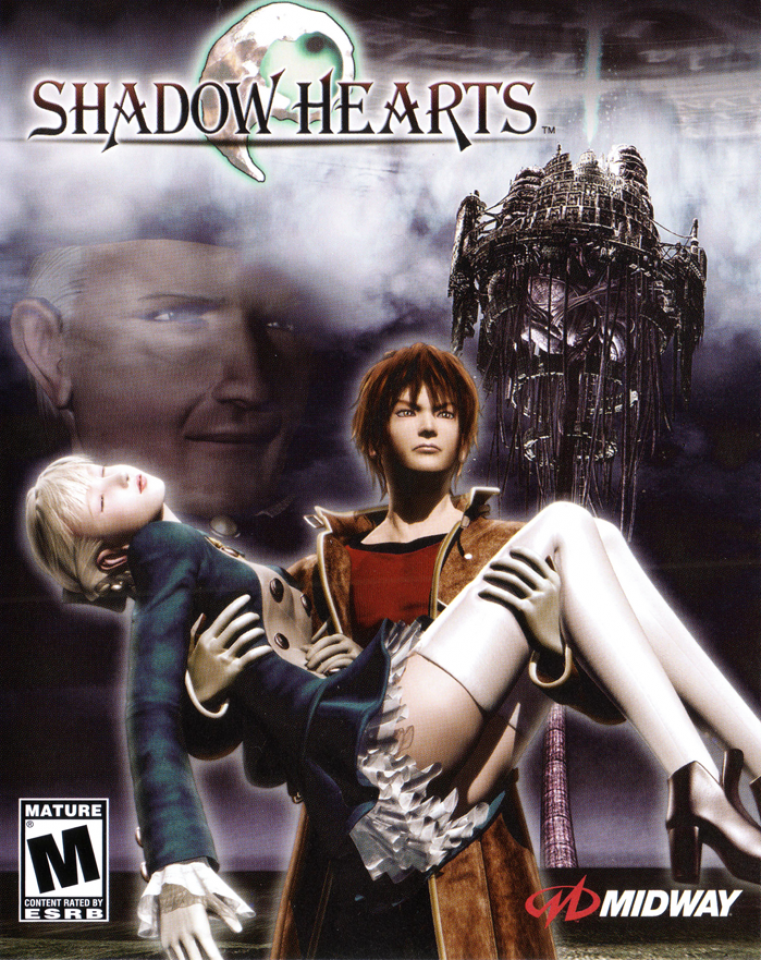A series of dark fantasy-focused games with turn-based combat and creature designs that can even make some old horror fans uneasy, Shadow Hearts launched at a time when turn-based combat in video games was at its height with all of its story’s fantastical and entertaining twists to history in tow. Shadow Hearts technically begins with a game titled Koudelka, which launched on the original PlayStation system in 1999 in Japan, and then saw a release in the West the following year. With locked camera angles and a turn-based combat system, Shadow Hearts combines the feelings of a horror game and a turn-based roleplaying game into an almost absurd package.

Opening with a slaughter on a train, the first Shadow Hearts game refuses to shy away from some of the darker themes that take place in its story. However, that same opening introduces us to our primary hero, Yuri Hyuga. A man blessed, or perhaps cursed, with an incredible ability to use the souls of demons he slays to take monstrous forms himself, players experience a slightly altered series of events across China and Europe during the escalation and first year of World War I. While the war is never the focus of the story, aspects of the tensions it caused for communities and their reactions to outsiders. This actually gives reasoning for several of the companions that Yuri meets throughout the game. Among those companions are Alice, a young woman that Yuri rescues from a nefarious scheme at the beginning of the game; Zhuzhen, a sage with some experience stopping the world-ending phenomena; Margarette, a spy trying to prevent the war through rather explosive means; Keith, a vampire who only recently woke up from a several century nap; and Halley, a young boy who has become a sort of big brother for several orphans in London. Ironically, the first game has the most understandable lineup of heroes, since Shadow Hearts as a series goes on to provide even more outrageous playable characters in the following two games, including Keith’s vampiric siblings, a princess, a wolf, a talking cat, a puppeteer, and more.
Along with mixing in entertaining characters for players to enjoy the hijinks of, Shadow Hearts takes real world history and provides a mystically-enhanced alternate version of significant events. Ever wonder what could’ve happened if Rasputin had proven, fantastical magical abilities while serving in the Tsar’s court? If a literal Pandora’s box hidden by the Vatican was opened? If Al Capone had a martial artist for a business partner? Shadow Hearts provides a take on all of these scenarios and more.
With a linear storyline like many prominent games of its era, Shadow Hearts lets players experience all of the wild twists and turns of its storyline while still being able to focus on adapting to the standout feature of its battle system, the Judgement Ring. Adding a little bit of challenge to the average turn-based combat set-up, the Judgement Ring is, in essence, a skill check, and players will be doing that skill check for just about everything in combat, from attacking and spells to using items to buff heroes and heal. Perhaps that sounds a bit intimidating, or perhaps not enough of a challenge for those who love skill checks, but Sacnoth programmed in some alternatives that can adjust the Judgement Ring to be closer to a player’s comfort and desire for challenge, including an “auto hit” option and an “all or nothing” option.
Overall, Shadow Hearts’ unique approach to turn-based combat and an alternative history timeline combine into a wonderfully surreal experience with memorable characters. The creature designs range from disarmingly cute to downright disturbing, and the atmosphere perfectly encapsulates a dark fantasy that doesn’t suffocate its audience with doom and gloom. Players who take the time to complete the side objectives may just find themselves rewarded with some extra content as well.
